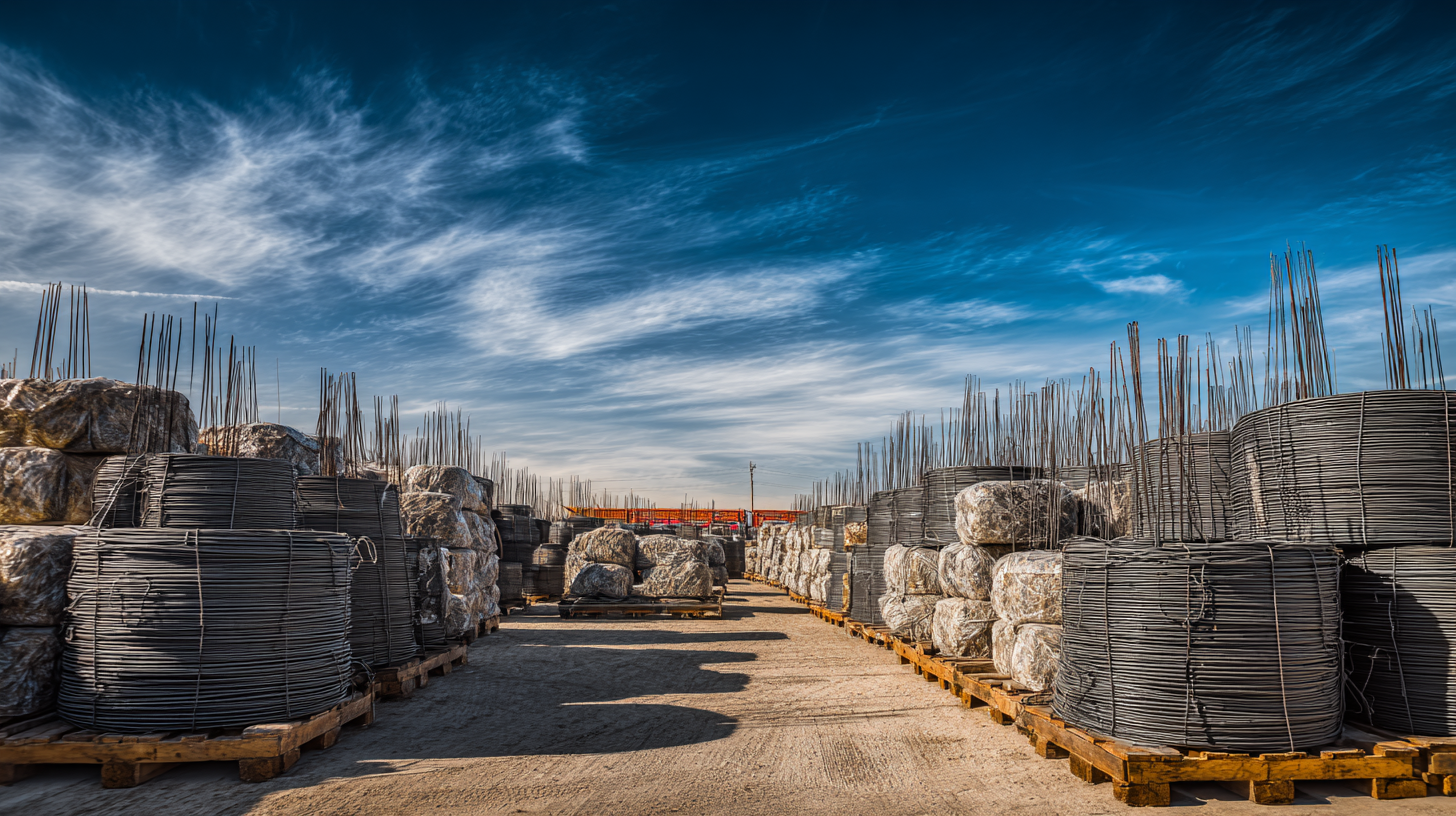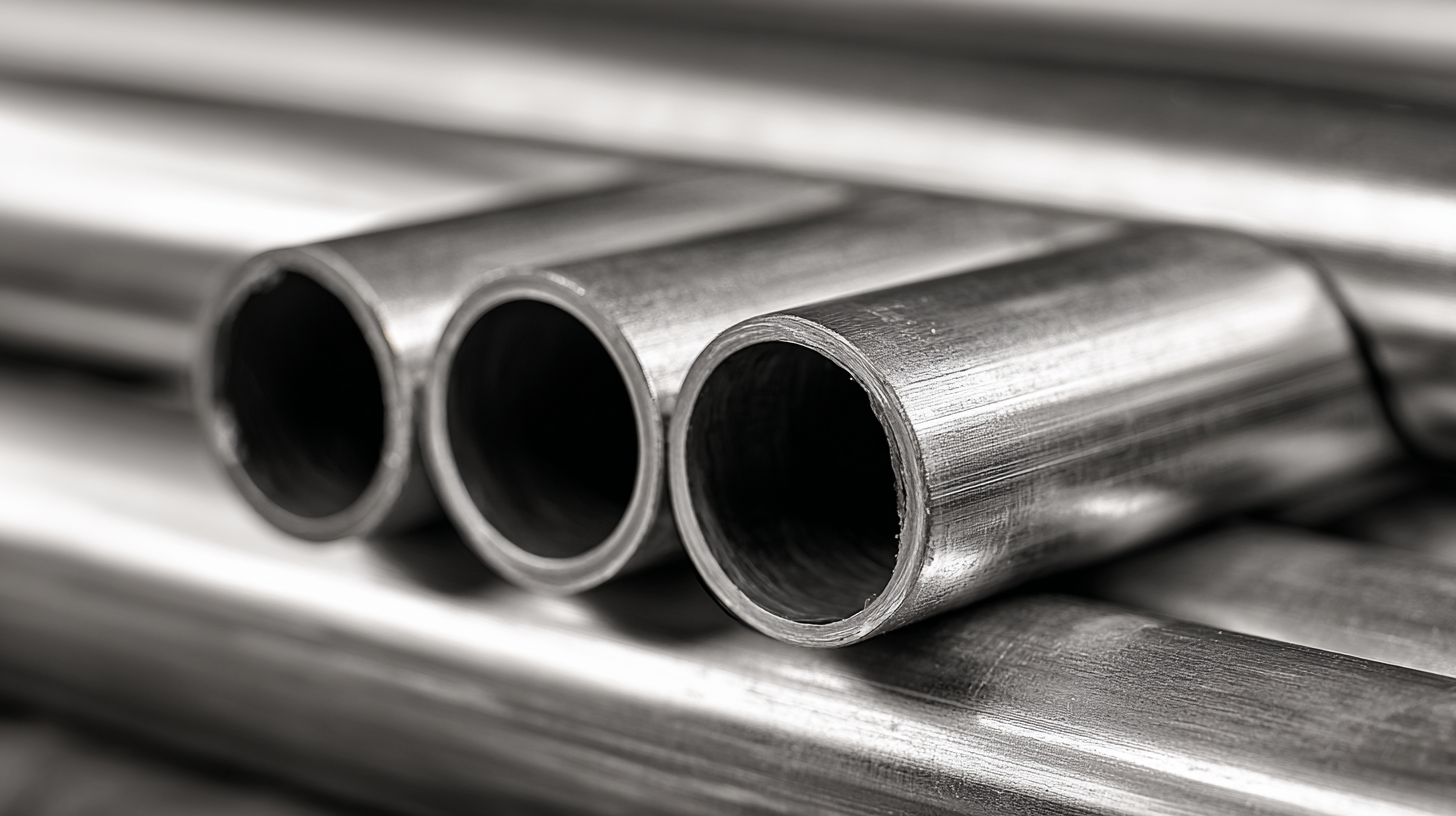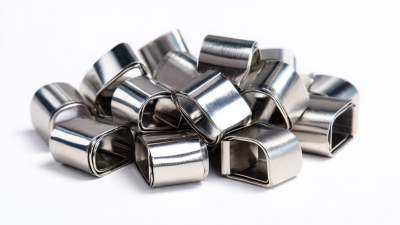A Comprehensive Guide to Choosing the Best Stainless Steel Bands Pole Type for Your Needs
Table of Contents
- Understanding Pole Types: A Breakdown of Stainless Steel Band Options
- Key Factors in Selecting the Right Stainless Steel Band for Your Application
- Durability and Longevity: The Lifespan of Stainless Steel Bands in Various Environments
- Corrosion Resistance: How Different Stainless Steel Grades Perform in Harsh Conditions
- Cost Analysis: Balancing Quality and Budget When Choosing Stainless Steel Bands
- Application-Specific Recommendations: Common Uses and Best Practices for Steel Bands
- FAQS
- Conclusion
- Related Posts
In the world of industrial manufacturing, choosing the right materials and components is super important if you want things to last and work efficiently. One product that’s been gaining a lot of popularity lately is the Stainless Steel Bands Pole Type, mainly because it’s resistant to corrosion and pretty darn strong. That makes it a great fit for all sorts of things—whether it’s in construction, auto industries, or other fields. If you’ve been keeping an eye on market trends, you might’ve seen in a recent report by Smithers Pira that global sales of stainless steel products are expected to hit around $210 billion by 2025. And that’s mainly thanks to the growing demand for sturdy, reliable materials. Here at Wenzhou Daren Electric Co., Ltd., we focus on making cold-punching automatic molds and tooling fixtures. We pride ourselves on our expertise in product design and mold making, which helps us meet the unique needs of each client. This guide is here to give you some handy info on how to pick the best Stainless Steel Bands Pole Type, so you can make a smart choice that really fits your specific needs.

Understanding Pole Types: A Breakdown of Stainless Steel Band Options
When you're trying to pick out the perfect stainless steel bands for your project, it helps to understand the different types of poles—yeah, poles—that are out there. These bands are super versatile and get used in all sorts of stuff, like holding pipelines in place or supporting structural parts. But here's the thing—each pole type has its own purpose and specific role, which can really influence how well things hold up and how long they last.
So, the usual suspects are single-loop, double-loop, and adjustable bands. Single-loop ones are pretty straightforward—they have a fixed size, making them great for setups where not much is going to move around. If you need a little more security or think things might need tweaking down the road, double-loop bands are your friends—they can handle different sizes and give that extra bit of peace of mind. And then there are adjustable bands — perfect if your project involves loads that shift or change, because you can tighten or loosen them whenever you need, keeping everything just right.
Figuring out which pole type is best really comes down to things like what you're installing, how heavy the load might be, and the environment it'll be in. Take your time weighing these options, and you'll end up making a smart choice that keeps your setup strong and lasting longer.

Key Factors in Selecting the Right Stainless Steel Band for Your Application
Picking the right stainless steel bands for your project might seem a bit overwhelming at first, but honestly, if you keep a few key things in mind, it gets a lot easier. Start by thinking about where you'll be using them. For example, if it’s a high-humidity area or somewhere exposed to corrosive stuff, you'll want bands with special coatings or treatments—stuff that helps prevent rust and keeps them from degrading over time. Also, don’t forget to check the size and strength. Make sure they can handle the weight or tension you need, and that they actually fit into your setup without any fuss.
Another thing to consider is how you plan to install them. Some stainless steel bands come with everything you need ready to go—like pre-attached hardware, which makes things super simple. Others might need a bit of extra tools or parts. Oh, and think about whether you’re going for something temporary or permanent. That choice can really make a difference in how long they last and how well they serve your purpose. If you keep these points in mind, you’ll be on the right track to picking out the perfect stainless steel bands that truly fit your project’s needs.
Durability and Longevity: The Lifespan of Stainless Steel Bands in Various Environments
When you're choosing stainless steel bands, it's really important to consider how durable and long-lasting they'll be, especially in different kinds of environments. According to a report from the International Stainless Steel Forum (ISSF), stainless steel is pretty much the rock star when it comes to resisting corrosion—especially in tough spots like saltwater or industrial settings. That tough resistance often means these bands can last more than 25 years even in harsh conditions. No kidding! That's why they're so popular for stuff like building projects or even food processing lines. The secret sauce? It's mainly because of their high nickel and chromium content, which together form a protective oxide layer that keeps oxidation at bay.

Plus, studies show that the specific type of stainless steel really matters for how long the bands will last. For example, grade 316, which is known for being super resistant to corrosion, is a great pick if you're dealing with salty coastal air or water. On the other hand, grade 304 can do the job in moderately corrosive conditions, but it might not hold up quite as well in the really extreme environments. The World Stainless Association even points out that choosing the right grade based on where you'll be using the bands can make a big difference, helping them stay strong and functional for years down the line.
Corrosion Resistance: How Different Stainless Steel Grades Perform in Harsh Conditions
When you're choosing stainless steel bands and poles, understanding how resistant they are to corrosion is a big deal — especially if you're dealing with tough environments. Different grades of stainless steel can handle things like seawater salinity, pH levels, and temperature changes pretty differently. For example, AISI 316L is often praised for its excellent resistance to corrosion, which is why you see it used so much in offshore oil and gas pipelines. It stands up well to salty conditions, helping to keep infrastructure durable and long-lasting.
A little tip: When picking out your stainless steel materials, it’s smart to think about the specific environment they'll be in. Taking a good look at factors like salinity, pH, and temperature swings can really help you choose the right grade. Also, don’t forget to consider how the material is made and treated—these steps can make a big difference when it comes to how well it resists corrosion in the long run.
At Wenzhou Daren Electric Co., Ltd., they’re all about crafting top-quality tooling fixtures that aren’t just designed to meet specs but are also built to hold up in tough conditions. Using innovative techniques in mold and product design, they boost the corrosion resistance of their products, making them perfect for all sorts of applications.
Cost Analysis: Balancing Quality and Budget When Choosing Stainless Steel Bands
When you're trying to pick the right stainless steel bands pole for what you need, it's pretty important to get a handle on the costs involved. I came across a recent industry report from Research and Markets, and it mentioned that the stainless steel market is expected to grow at an annual rate of about 5.4% through 2027. This growth is mainly driven by more demand in areas like construction and auto manufacturing. So, even though prices might go up and down a bit, investing in good quality stainless steel bands can actually save you money in the long run. For example, a basic stainless steel band usually costs between $50 and $100, but if you go for higher-grade materials, you’ll get better durability and performance—that’s worth considering.
A good tip to keep in mind is balancing quality and your budget. Look out for certifications and specific grades—like 316 stainless steel, which offers really strong resistance to rust and corrosion—even if it costs a bit more upfront. Also, don’t forget about buying in bulk. Suppliers often throw in decent discounts if you order larger quantities, which helps save a bunch without sacrificing quality. So, by taking these things into account, you can choose something that not only fits your budget but also lasts a good long time.
A Comprehensive Guide to Choosing the Best Stainless Steel Bands Pole Type for Your Needs
Application-Specific Recommendations: Common Uses and Best Practices for Steel Bands
When you're picking out stainless steel bands for a specific job, it’s really important to get a good grasp of their unique qualities and perks. These bands are especially awesome in situations where durability and resistance to corrosion are a must. Take the construction world, for example—stainless steel bands are perfect for holding together conduit, pipes, or ductwork, helping everything stay put and keep its strength over time. Picking the right type—like whether you want a smooth finish or a ribbed one—can actually make a difference in how well they grip and stop slipping, especially outdoors or in harsher conditions.
On the farm or in agricultural setups? Stainless steel bands are super handy for a bunch of tasks—securing irrigation lines, fastening fences, you name it. They're tough enough to handle rough weather, heavy loads, and exposure to chemicals without breaking a sweat. To get the best bang for your buck, go for bands with high tensile strength and good rust resistance—that way, they last way longer. And don't forget, features like adjustable sizes or pre-punched holes can seriously save you time during installation and make your life way easier out there in the field.
In the end, matching the right stainless steel band to your specific needs means you’ll end up with a setup that performs well and stands the test of time.
FAQS
: Key factors to consider include the environment of use, the size and tensile strength of the bands, the type of fastening method, and whether the bands are intended for temporary or permanent applications.
Environments with high humidity or corrosive substances may require bands with special coatings or treatments to prevent rust and degradation.
Stainless steel bands can have a lifespan exceeding 25 years in harsh conditions due to their exceptional resistance to corrosion.
Grade 316 is recommended for coastal areas with saline exposure due to its superior corrosion resistance, while grade 304 is suitable for moderately corrosive environments.
Corrosion resistance helps maintain the structural integrity and functionality of the bands, especially in harsh environments, ensuring their longevity.
Yes, some stainless steel bands are designed for temporary use while others are suited for permanent installation, so it's important to choose based on your specific needs.
Using the incorrect grade can lead to premature degradation and failure of the bands, compromising their effectiveness and lifespan.
High nickel and chromium content forms a protective oxide layer that prevents oxidation and enhances the durability of stainless steel bands.
Yes, some stainless steel bands come with pre-attached hardware for easier installation, while others may require additional tools or components.
Tensile strength is crucial as it ensures that the bands can handle the intended load without failing during use.
Conclusion
In today’s industry, choosing the right stainless steel band pole type is pretty important if you want things to run smoothly across various applications. This guide will walk you through the different types of poles out there, highlighting what really matters—like durability, how well they resist corrosion, and whether they’re worth the cost. Understanding how long stainless steel bands tend to last in different environments and how different grades perform under tough conditions can really help manufacturers make smarter choices—finding that sweet spot between quality and budget.
At Wenzhou Daren Electric Co., Ltd., we pride ourselves on our expertise in product design and manufacturing. We know what works best for specific applications, and that insider knowledge can be a real game-changer for businesses looking for the perfect stainless steel band solutions tailored to their needs. Our all-in approach means our clients can unlock the full potential of stainless steel bands— boosting efficiency and making sure things last longer.
Basically, if you’re trying to figure out which pole type to go with, we’ve got you covered—making sure you get the right mix of durability, cost, and performance, so you can focus on what really matters: running your business smoothly.
Related Posts
-

Global Quality Triumphs Best Stainless Steel Bands Pole Type in International Markets
-

How China’s Stainless Steel PVC Coated Bands Thrive Amidst US China Tariff Challenges
-

The Future of Best Polyester Coated Stainless Steel Strapping Banding in 2025 A Comprehensive Guide to Industry Innovations
-

The Best L Type Stainless Steel Banding Clip Options for Your Needs
-

China Manufacturing Excellence Unleashing Quality and Quantity for Global Success
-

Finding Quality Suppliers for Best High Quality Stainless Steel Manual Banding Tools in Today's Market
Blog Tags:






